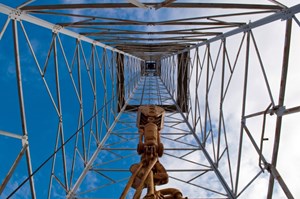Zephyr Energy updates well activity at flagship project in Paradox basin
(WO) – Zephyr Energy has provided an update on operations on the State 36-2 LNW-CC well and the State 16-2 LN-CC well at the company’s flagship project in the Paradox Basin, Utah, U.S (the “Paradox project”).
State 36-2 well update
The State 36-2 well intersected a major natural fracture network in the Cane Creek reservoir, which led to a significant influx of hydrocarbons into the wellbore. This influx was managed and safely controlled, which subsequently allowed for the drilling of an additional 132 ft in the fractured and productive Cane Creek reservoir. The company then elected to run production casing down to the total-depth of the well.
The company has now finalized its planning for the completion and production testing of the well’s fractured reservoir interval. All services have been procured, with operations expected to start in the next two weeks when a service rig will be mobilized to site.
Workover operations and production testing are expected to take four to six weeks to complete. The production test will be paid for from the company’s existing cash resources and any oil and condensate produced during the test is expected to be sold via existing marketing partners.
State 16-2 well update
The first phase of the extended production testing on the well has now concluded within the flare consent limit set by the regulatory bodies. The company now plans to further test the well to gather more data.
During the most recent testing, the company’s efforts were primarily focused on surface facility issues, and once these issues had been successfully resolved, the well was initially brought online at choked-back, moderate rates in order to test for flow assurance at varying levels of production. At a controlled rate of 2 MMcftgd and 100 bopd (an average of 433 boed), the well flowed continuously and surface flow assurance efforts proved successful.
As flow rates were increased above those levels, well performance became limited by fresh water pumping capacity and was subsequently impacted by the formation of down hole salt precipitate, an issue not uncommon with this type of completion. The precipitate, which blocked and subsequently cleared multiple times, impacted the well’s flow capacity to achieve extended higher rates. The company was in early stages of testing higher rates when its mandated flaring limits were reached.
Zephyr is now assessing whether the precipitate issue is a function of continued flow back of injected completion fluids or a function of normal flowing conditions. If it is a result of normal flowing conditions, a series of mitigation solutions that have been successful in the past can be applied.
In relation to the State 36-2 well production test, precipitate formation is not expected to pose an issue as the well is testing the natural fracture network. In addition, the well has not been hydraulically stimulated and will therefore not flow back large volumes of completion fluid.



